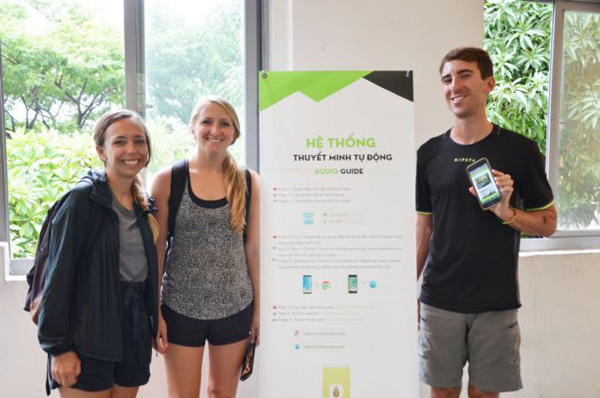 |
| Tourists enjoy an audio guide for exploring the Da Nang Cham Sculpture Museum before coronavirus hit the city. Digitalisation and virtual exhibitions are seen as a safe solution for museums to survive the pandemic. Photo courtesy of Ly Hoa Binh |
Database digitalisation, 3D experiences, audio guides and virtual visits have been introduced to offer non-contact services at three popular museums in the city: the Da Nang Museum, the Da Nang Cham Sculpture Museum and the Da Nang Fine Arts Museum.
Despite four social distancing orders, the museums have managed to maintain an active working status despite the coastal tourist hub being hit by the virus.
Regular exhibitions, which were scheduled before the pandemic outbreak, have opened online or had virtual versions for people to find updated information and see showpieces.
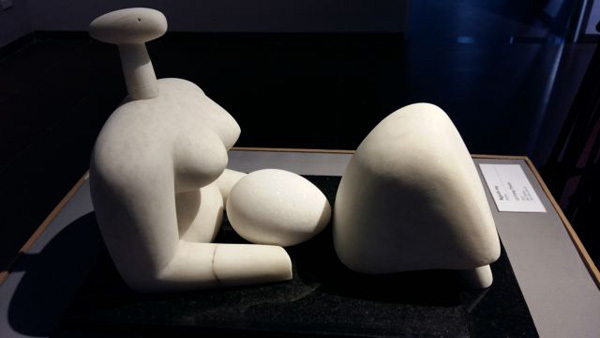 |
| A stone statue at the Da Nang Fine Arts Museum. Video clips and 3D guides were posted on social networks for connection during social distancing. VNS Photo Cong Thanh |
“We had plans for events amid the pandemic outbreak. Information technology applications, digitalising database of artefacts and exhibits and 3D scanning images were used to better support viewers exploring the museum,” Vice Director of the Da Nang Fine Arts Museum Nguyen Thi Trinh told Việt Nam News.
“All exhibitions are kept going by updated images and information at the museum website, and Facebook on the digital version. We do not leave the museum in deadlock due to the coronavirus pandemic.”
She said the detailed introduction of authors, and artefacts from every exhibition were available for all virtual visits, while video clips offered real views of exhibition spaces and activities.
Strict coronavirus prevention measures had remained active since the city's tourism industry was damaged by the pandemic, she added.
Trinh said the museum had also hosted an online Children’s Day painting exhibition by posting dozens of artworks from kids in Da Nang, celebrating Museum Week in Vietnam as well as responding with interaction and information communication in virtual museums on the International Museum Day.
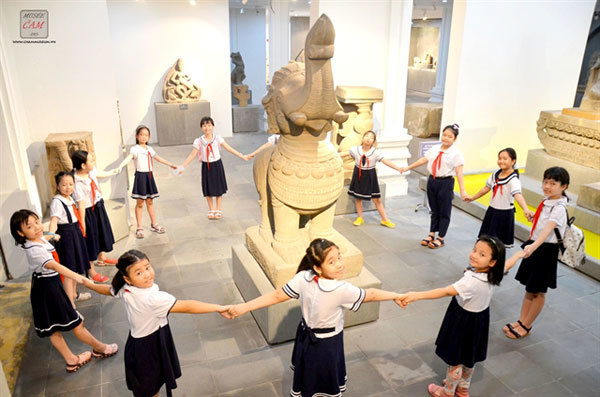 |
| School students join a field trip at the Da Nang Cham Sculpture Museum before the pandemic. COVID-19 has blocked tourists from mass gatherings at museums and public places in the city. Photo courtesy of Ly Hoa Binh |
The Fine Arts Museum, the only one of its kind in the Central and Central Highlands region, displays sculptures and paintings of contemporary fine arts from Da Nang and wider central Vietnam.
Virtual exhibitions
The Cham Sculpture Museum – one of the most popular destinations in the city – and one of the city’s tourism magnets immediately introduced a 3D experience for tourists visiting the museum. The digital tourism introduction was seen as an option in keeping the museum's doors open for all visitors during the pandemic.
“All exhibits were scanned to allow visitors to tour the museum in Vietnamese and English, with an audio and visual introduction,” said Ly Hoa Binh, a communication employee at the museum.
He said the museum had already started an audio guide for tourists in 14 languages via smartphones for all visitors, and the system was useful during social distancing.
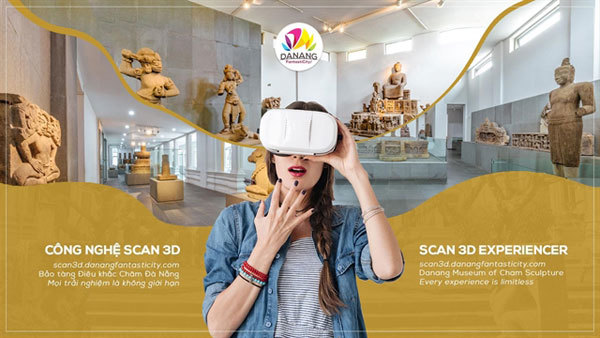 |
| A poster for a 3D experience at a museum in central Vietnam. Three museums in Da Nang have offered virtual versions for visitors during social distancing. Photo courtesy of Ly Hoa Binh |
Binh said the 3D and audio guide systems depicted unique artefacts including sandstone statues found at many Cham towers and excavations from the Sa Huynh Culture (between 2,500 and 3,000 years old) in central Vietnam.
He said high-resolution images and videos of artworks and cultural artefacts of the museum had been presented on Google Arts & Culture – a global online platform – which had helped promote the museum to the public worldwide.
Binh said the museum and the Southeast Asian Art Academic Programme at the School of Oriental and African Studies, University of London, had also launched an English-language book titled Vibrancy in Stone – Masterpieces of the Da Nang Museum of Cham Sculpture, providing a collection of high-quality photographs highlighting the museum’s attractions to mark its 100th anniversary.
The 1915-built museum, situated on the west bank of the Han River, is the oldest museum in Da Nang.
Meanwhile, audio guides in Vietnamese, English and French were introduced at the Da Nang Museum, and a database of tangible and intangible cultural heritage was digitalised.
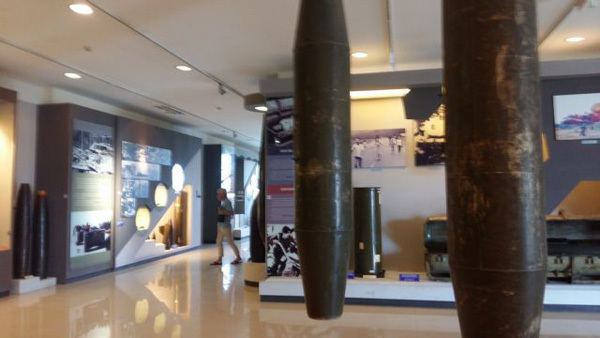 |
| An exhibition space at the Da Nang Museum. Many artefacts, photos and documents were scanned for making virtual versions. VNS Photo Cong Thanh |
The Director of the museum, Huynh Dinh Quoc Thien, said that some key parts of the database including more than 3,300 documents, films, sound recording and heritage photos had been selected for tourists visiting the site.
He said the audio guide of the National Cultural Intangible Heritages including the Stone Arts Sculpture of Non Nuoc craft village, Tuong Xu Quang (Quang Nam’s classic drama), Whale Worshipping (Le Hoi Cau Ngu), and the UNESCO-recognised Bai Choi (folk singing) could be accessed by using a QR code for visitors at the museum.
Despite the absence of tourists, the city’s museum system, which usually hosts around 500,000 visitors per year, has been one of the most dynamic destinations in central Vietnam in dealing with the pandemic.
The virus has pushed the city’s tourism back 20 years in terms of revenue, suffering a 56.4 per cent reduction.
Da Nang only hosted 2.7 million tourists in 2020 for US$183 million revenue, a huge drop in a city where tourism is key to the local economy.
The city's statistics showed that 40 per cent of tourist businesses have suspended operation, while 76 per cent have reduced their labour force.
Source: Vietnam News
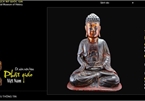
National Museum of History to go digital to attract more visitors
Twenty national treasures at the Vietnam National Museum of History in Hanoi will be introduced to the public via a virtual gallery in June at the latest with support of digital technology.
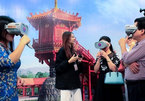
Trend of virtual reality technology museum
The Vietnam Fine Arts Museum has held an exhibition on “Discovering the architectural heritage of the One Pillar – Dien Huu Pagoda from the Ly Dynasty through Virtual Reality technology”, developed from research results of the SEN Heritage group.